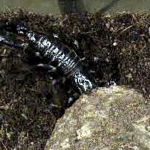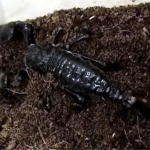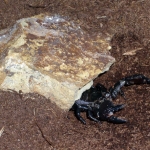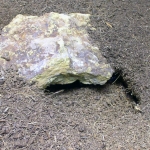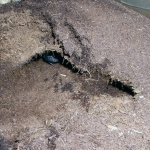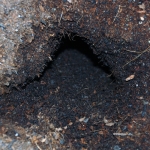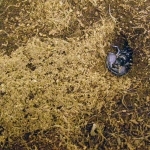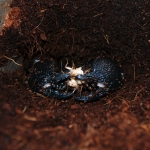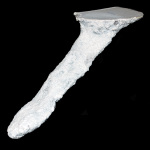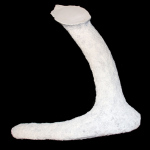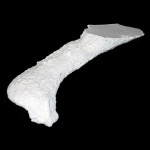Emperor Scorpion (Pandinus imperator)
For full details see Hembree (2014) in Experimental Approaches to Understanding Fossil Behavior (Topics in Geobiology, Springer)
Description of Organism
- One of the largest extant species of scorpion, reaching lengths of 20 cm
- Large, heavy claws (pedipalps) with a granular surface tecture
- Inhabits soils of forests and savannahs in West Africa
- Feeds on invertebrates as well as small vertebrates
- Live individually or in groups of up to 15-20 individuals
Published Descriptions of Organism
Hembree (2014):
- Pandinus imperator, Koch 1842 (Scorpionidae), commonly referred to as the emperor scorpion, is among the largest extant species of scorpion reaching up to 20 cm in length and 65 g in mass. They are communal animals and can live in groups of up to 15–20 individuals. Pandinus imperator is a nocturnal hunter characterized by a pair of large pedipalps used in prey capture and defense. Their large size allows them to feed on a variety of invertebrates including other scorpions as well as small vertebrates such as reptiles and rodents. Pandinus imperator inhabits forests and savannahs of West Africa with warm humid to subhumid climates and is known to be an obligate burrower. Despite this knowledge, there has been very limited research on how these burrows are constructed or the details of their morphology.
Burrowing Technique
Pandinus imperator burrows by direct excavation, using the first two to three pairs of walking legs. These legs are used to excavate and lift sediment particles from the floor and walls of the developing burrow. The excavated sediment is gathered into a loose mass, held with the first two to three pairs of walking legs, and then dragged backward out of the burrow and away from the burrow opening.
Burrowing Technique Videos
Burrowing Behavior
Pandinus imperator specimens begin to burrow within 1-24 hours of placement into experimental enclosures. Burrows are often started near or beneath rocks or pieces of wood so that the burrow entrance is partially hidden. Burrow openings have a distinctive triangular shape. Excavated sediment is deposited in a broadly distributed pile located next to and up to 20cm away from the burrow opening. During intervals of burrow expansion, sediment is deposited along the floor of preexisting tunnels, and on very rare occasions, entire tunnels are backfilled as new tunnels are excavated. The burrows are used as temporary shelters to permanent dwellings. Burrow openings are used as prey ambush sites and deeper, more complex burrows are used to trap prey beneath the surface.
Trace Morphology
Pandinus imperator produces three distinct types of burrows: subvertical ramps, helical burrows, and branching burrows; examples of each are shown below. Each photo is linked to an information page about the specific burrow architecture shown.
